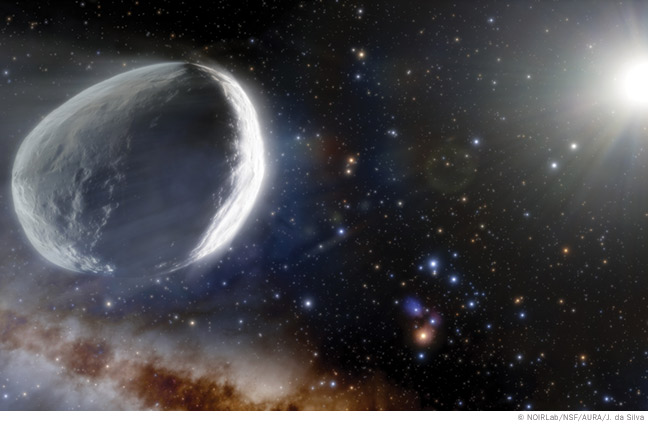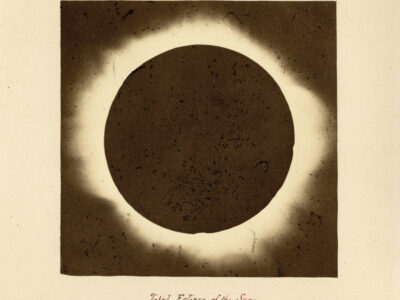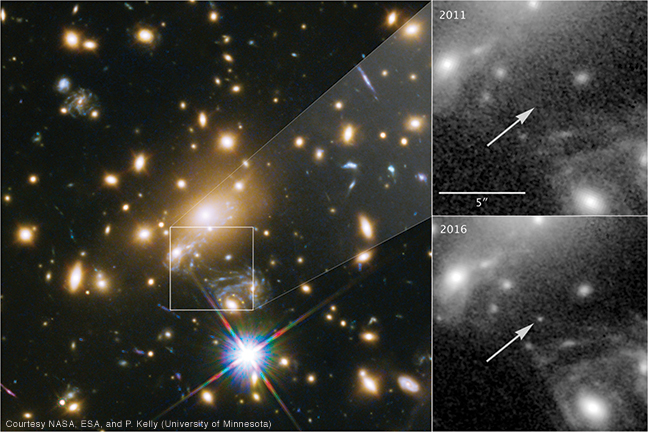
A giant comet potentially larger than the island of Hawaii has been spotted by Penn astronomers. The Bernardinelli-Bernstein comet (C/2014 UN271) is named after its discoverers, Pedro Bernardinelli G’21 Gr’21 and Gary Bernstein, the Reese W. Flower Professor of Astronomy and Astrophysics, who found it after sifting through archival images from the Dark Energy Survey (DES) this past June. The pair had identified more than 800 novel icy objects with orbits larger than Neptune’s; but one, designated C/2014 UN271 (in reference to the date the picture was taken, October 2014) was “by far the most interesting one we found,” Bernardinelli told the New York Times. At the time the image was captured, the object showed no features associated with comets, but its dimensions were notable. Within days after it was announced, astronomers from two other observatories recorded new images that showed a fuzzy border, known as a coma—a telltale sign of a comet.
The Bernardinelli-Bernstein comet is currently not the largest object beyond Neptune, but as it moves closer towards the sun’s glare, more of its ice will vaporize, enlarging its coma and making it the largest comet ever observed in recorded history. Bernardinelli conservatively estimates that its nucleus is between 62 and 125 miles long.
It was also discovered at a greater distance than any previous incoming comet. First seen by DES in 2014, it was 29 astronomical units (au) from the sun, and as of June 2021 it had moved closer to 20 au. It will reach its perihelion (nearest point to the sun) in 2031 at 11 au, when it grazes Saturn’s orbit.
Despite the comet’s great size, it won’t get close enough to Earth to be visible to the naked eye. It’s also unlikely that any spacecraft will be able to get a closeup look, given its distance and the amount of fuel required for such a mission.
Still, astronomers are excited about the chance to observe this comet in detail over the coming years. Bernardinelli said in Penn Today that the Vera C. Rubin Observatory, a telescope under construction in Chile, “will continuously measure Comet Bernardinelli-Bernstein all the way to its perihelion in 2031 and probably find many, many others like it.”





What does “larger than the island of Hawaii ” mean? Does it mean “more mass than Hawaii”? (But the island is attached to the Earth. How much is counted as Hawaii?) Does it mean “more surface area than Hawaii”? Does it mean “the diameter of the asteroid is greater than the distance between the northernmost and southernmost pasts of Hawaii”?
Or is it just a wild guess?